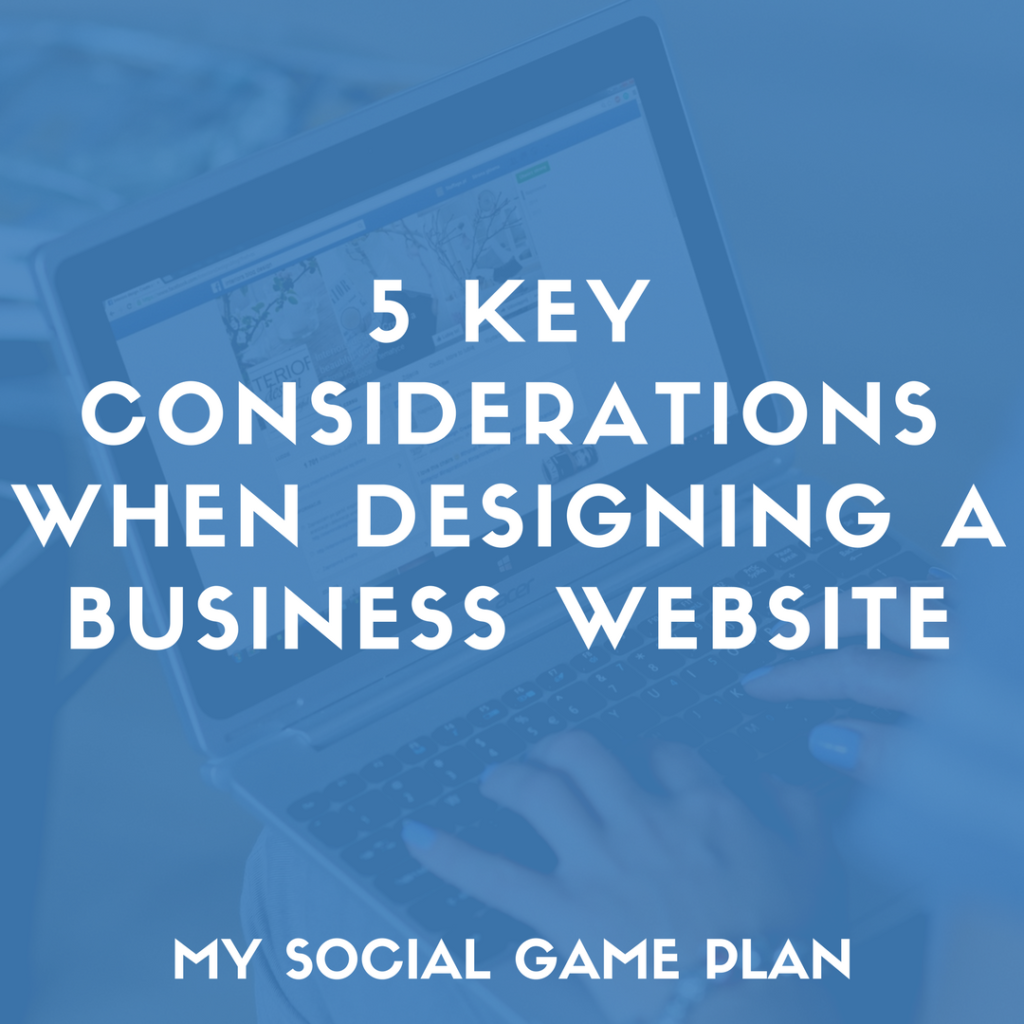Your website is often the first factor that influences how people feel about your business. Recent research found 97% of consumers use online media to aid their purchasing decisions.
Let’s put it this way: poor web design and functionality? Then the back button is getting clicked immediately and your product is out of that potential customer’s consideration set.
Yep, it happens that fast.

Great web design assures every online visitor they’re about to have an enjoyable experience the moment he or she lands on the site. When done correctly, it leads the visitor out of the unknown and into the known, providing knowledge about and access to a solution that meets their needs.
A quality web design should lead visitors exactly where they need to go. It’s imperative the design offers every visitor specific actions to take before leaving the website, whether that’s making a purchase, filling out a lead generation form, subscribing, or making a phone call.
While designing a business website or blog can be a very complex process, here are five key considerations to always keep in mind.
1. Web Design Shouldn’t Be an Urgent Process
When developing a company website, the quality and creativity of the design needs to be the highest priority. Don’t rush the process. Deeply contemplate how and why your target market will be visiting your website.
Are they primarily visiting from a desktop or mobile device? Is your product’s purchasing process characterized by high-involvement or low-involvement decisions? Are customers seeking information or seeking to make a quick purchase?
Your website is, at the core, a marketing tool that represents your brand. If quality is lacking or it doesn’t hit your target audience, it could very easily reflect negatively on your brand as a whole. Taking the time to develop a quality, creative, and targeted website will do wonders for your business.
2. Too Busy with Too Much Content
A lot of businesses, especially small businesses, believe their website needs as much content as can possibly fit. This isn’t the case at all. More choice isn’t necessarily better and receiving too much information at once can instantly diminish the quality of the design.
Your website should a minimal amount of information located on the home page, delivering only the most primary content about how your business will solve that potential customer’s needs. The home page’s purpose is to drive the visitors to an internal page where they can find additional info about what they’re particularly interested in.
Every page on your website should have a clear purpose and a call-to-action. Are you trying to convert visitors to email subscribers, make a purchase, or call to your office to schedule an appointment? Make the purpose of your pages obvious and have only 1-2 goals per page.
In general, less is more. Remember who you’re targeting and what course of action you want them to take, then provide a path and incentive to pull them in that direction.
3. A Few Seconds Makes All the Difference
How long do you have to capture a visitor’s attention when they land on your website? Consider yourself very lucky if someone sticks around for 10-20 seconds without finding what they’re looking for.
This short attention span is exactly why too much content on any single page can be a detriment. The design must immediately grab the visitor’s attention and convey that you have the solution to their needs. Grabbing the attention of your visitor comes down to the details: imagery, headings, subheadings, color, a good balance of static information and interactive content, and so on.
Check out the video blow for a breakdown on how to grab attention and quickly convey your site’s purpose to visitors.
4. From Blueprint to Computer Screen
The most significant problem every company faces when designing their website is figuring out where to start. Before the website design can begin, it’s important to understand exactly what platform the site will be built on. Most professional web developers use extensive coding — HTML, PHP, and CSS programming — to create the exact style and design the company requires. However, this isn’t necessarily the only option.
In 2003, WordPress brought an incredible website framework to the Internet. Since then, it has been used by many companies as a way to generate beautiful web pages, as well as blogs. WordPress offers extensive add-ons and plug-ins that, to a degree, circumvent the extensive coding process, allowing companies to more quickly build a site that functions exactly the way they need.
Additionally, third-party vendors have created thousands of professional style, pre-designed WordPress themes that can be downloaded and immediately put to good use. Most of these themes (templates) offer a variety of layouts and designs, as well as simple customization options even the layperson can handle.
A small word of caution here: WordPress is an amazing platform and, on many levels, very simplistic even for non-web designers. However, it’s in your best interests to avoid the DIY mentality when it comes to designing your business’ website and always have your website professionally designed if your budget allows for it.
5. Attracting a Larger Audience
The adage, “if you build it they will come,” is absolutely not true on the Internet. Actually, I’m not sure it’s true anywhere in the universe! With billions of web pages and every competitor having a website, it takes a proven online marketing strategy to maximize the number of visitors to your website.
There are three major ingredients in an online marketing strategy, all of which are interrelated:
- Search engine optimization
- Unique, quality content generated via a blog
- A social media presence on networks where your target market is active
It’s likely you’ll need to hire an experienced professional to manage your search engine optimization initiatives.
However, both your blog and social media channels should be managed in-house as much as possible.
MORE: Get three practical lessons about creating a winning social media strategy for your business. Join here.
If you don’t have anyone on staff who is experienced with digital marketing, temporarily outsourcing to a digital marketing agency may be your best option. Be sure to consider the pros and cons of outsourcing social media management if you take this path.
The Internet as a Battle Ground
In this business world, the Internet is a battle ground where quality, consistency, clarity, and strategy are everything. From layout and content, to blogging, social media, and search engine optimization, a properly designed website is your ticket to a more successful, profitable, and accessible business.
If you know someone who’s designing a website or blog, forward this post over to them and ask how they feel about this list!
__________________________________________
About the Author: Anny Solway is a dedicated writer at ThemeFuse – a web studio that creates original WordPress templates, which can be used straight out of the box. She loves to share blogging and technology tips.


Speak Your Mind